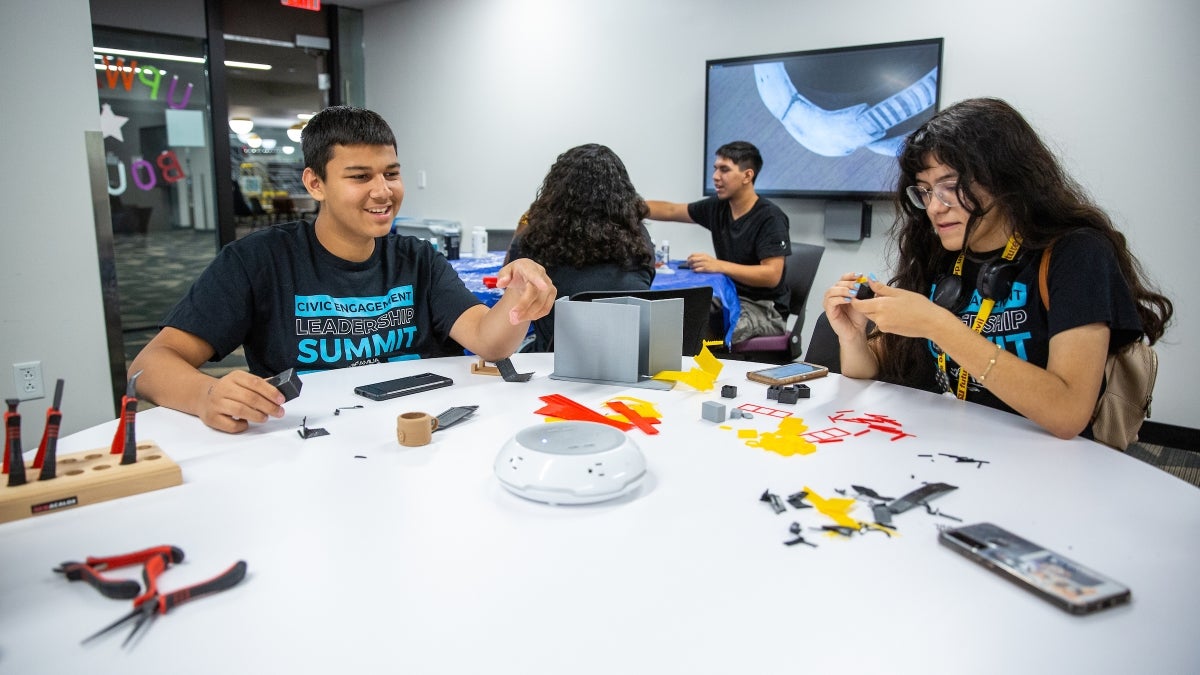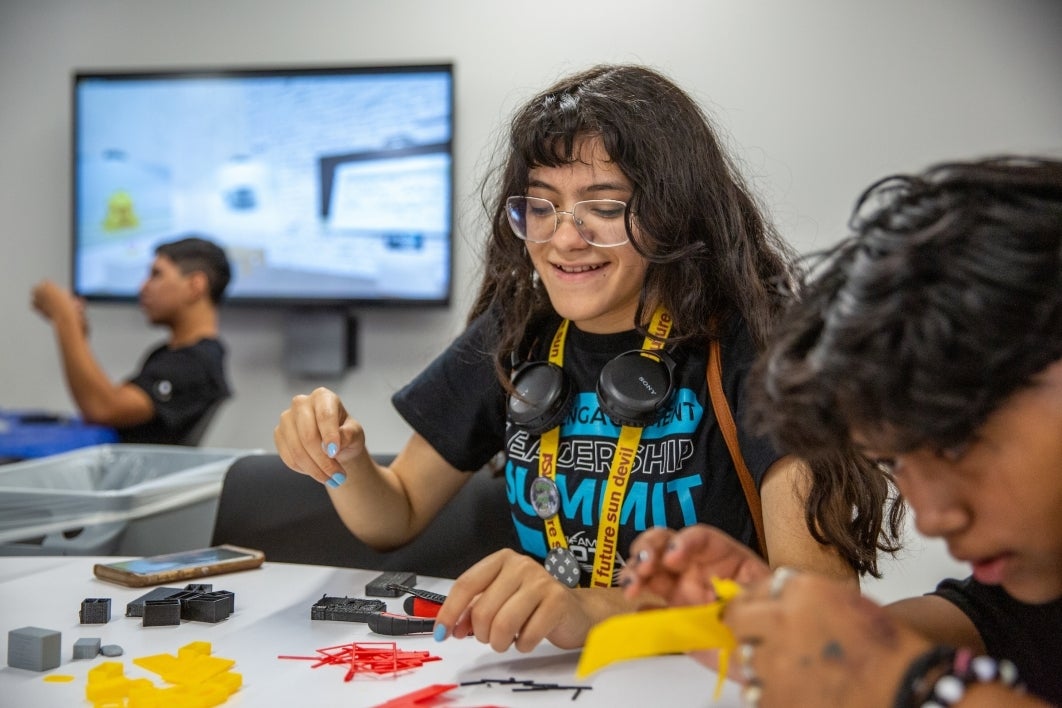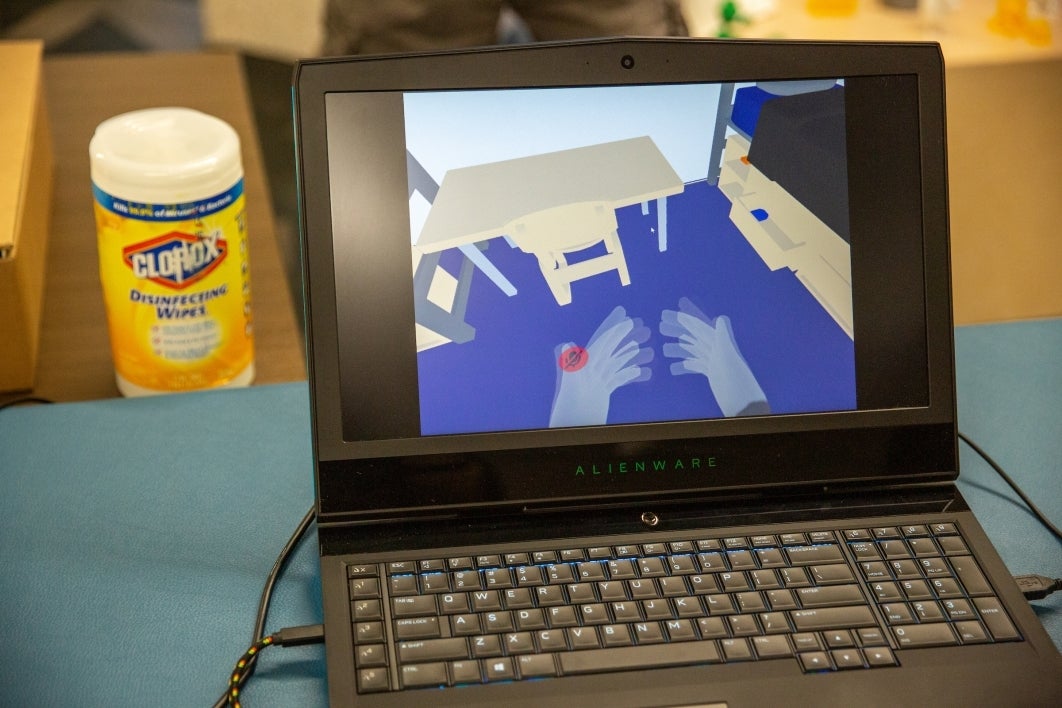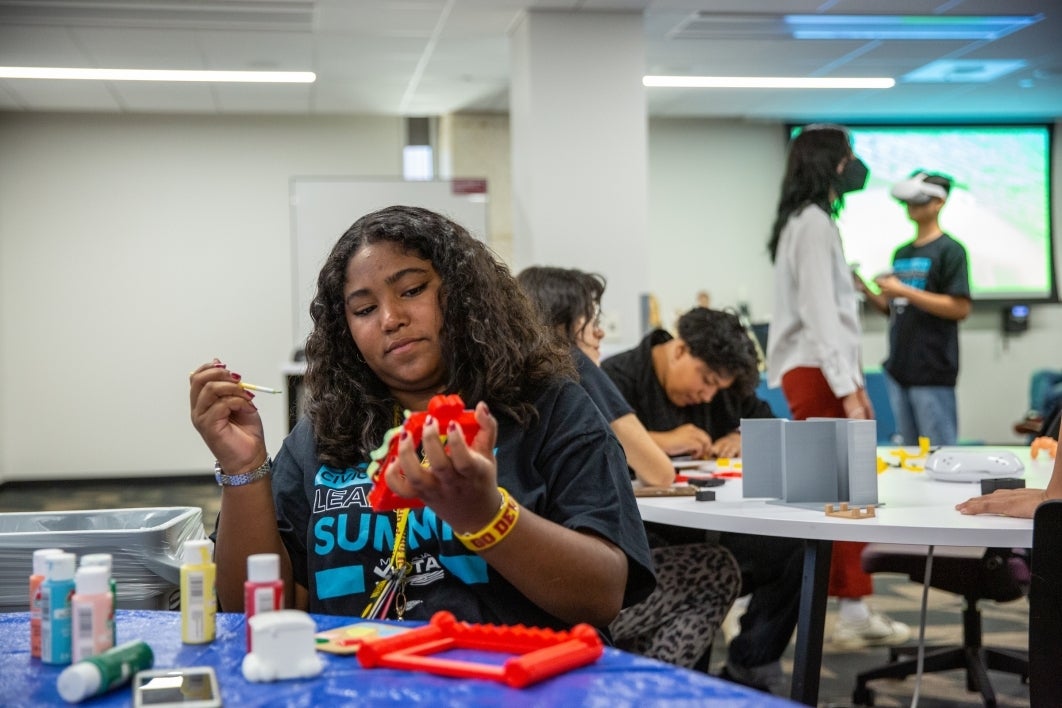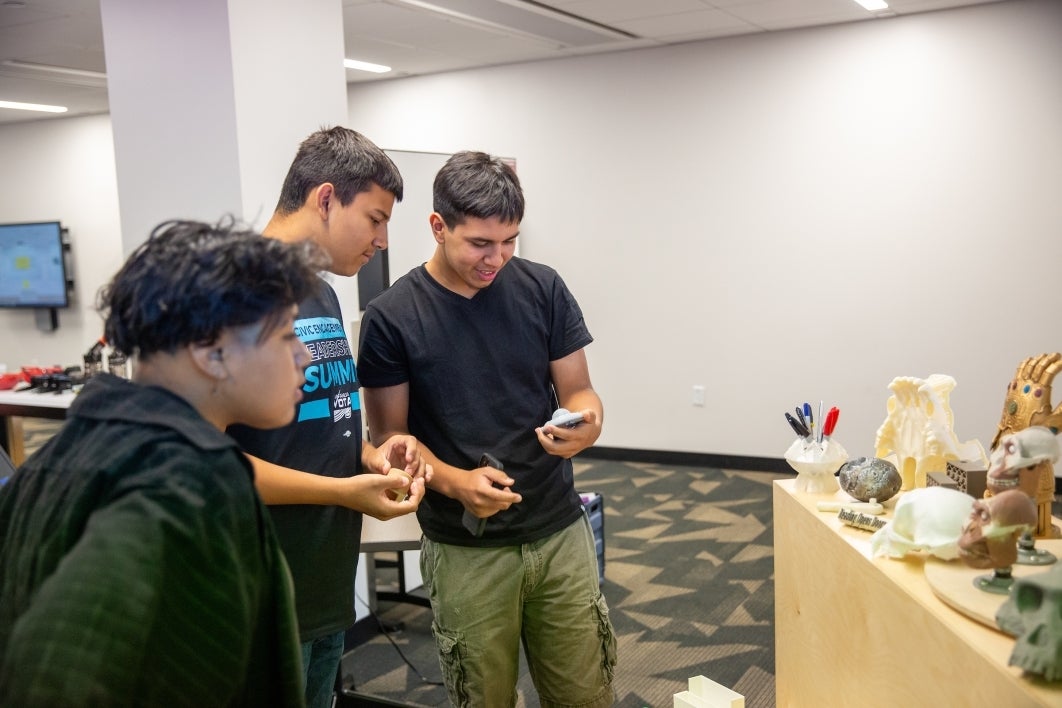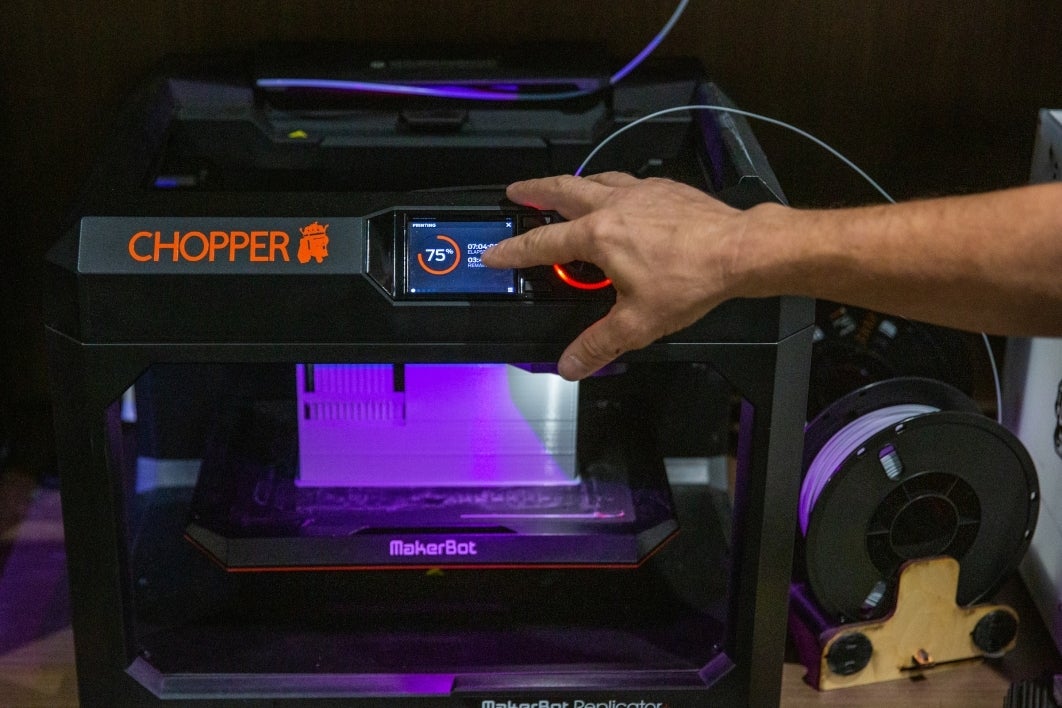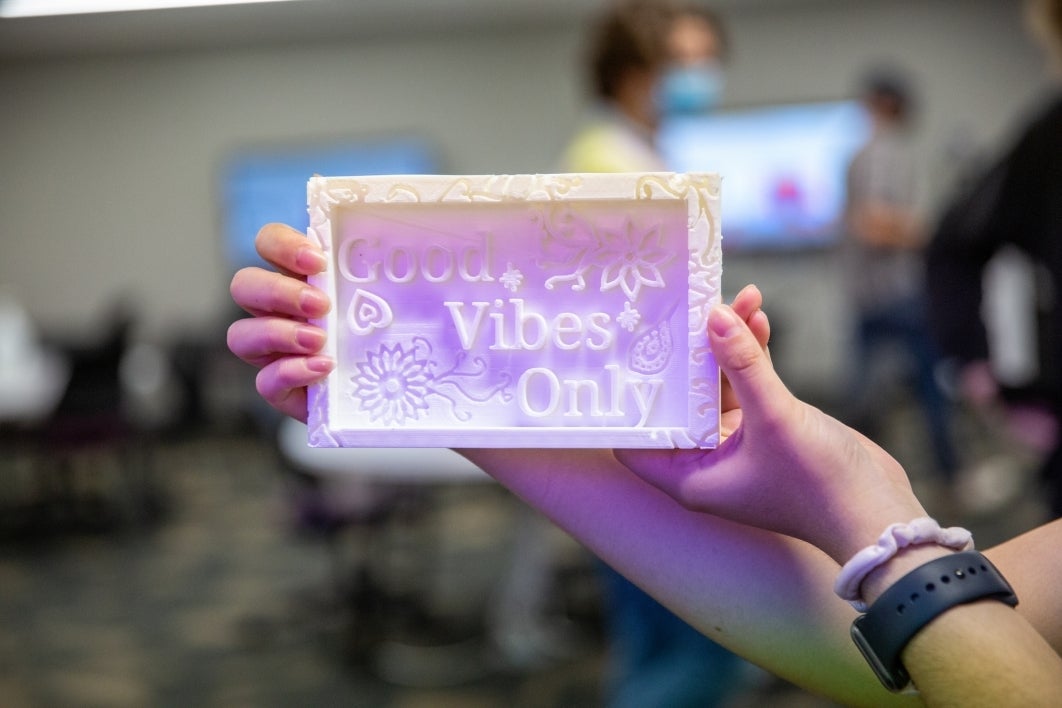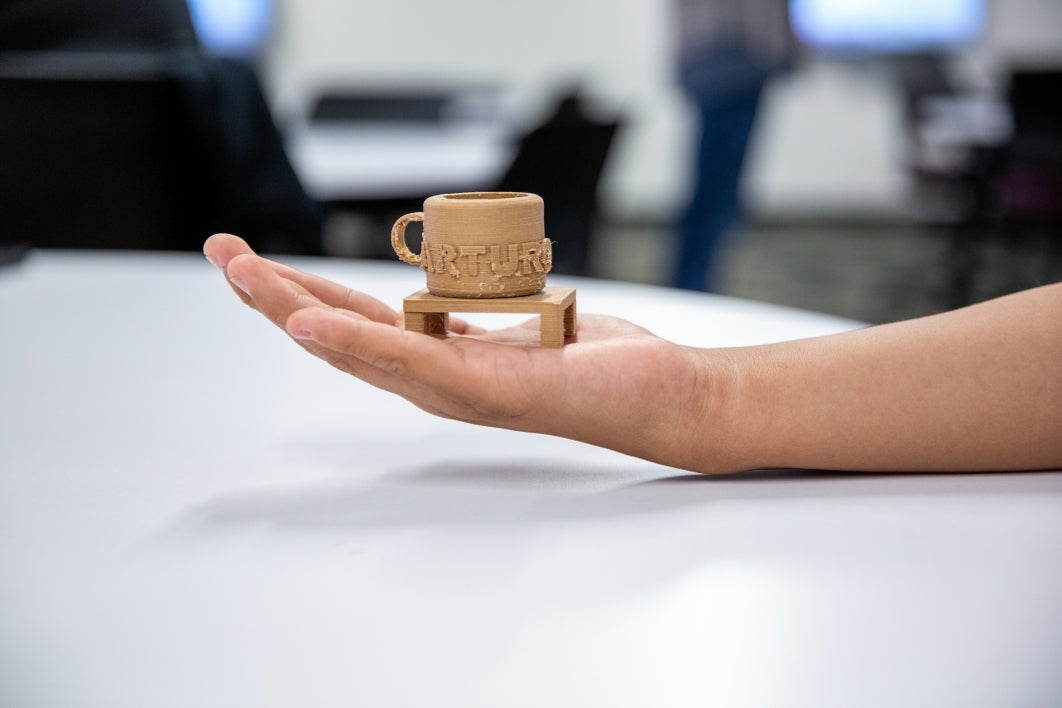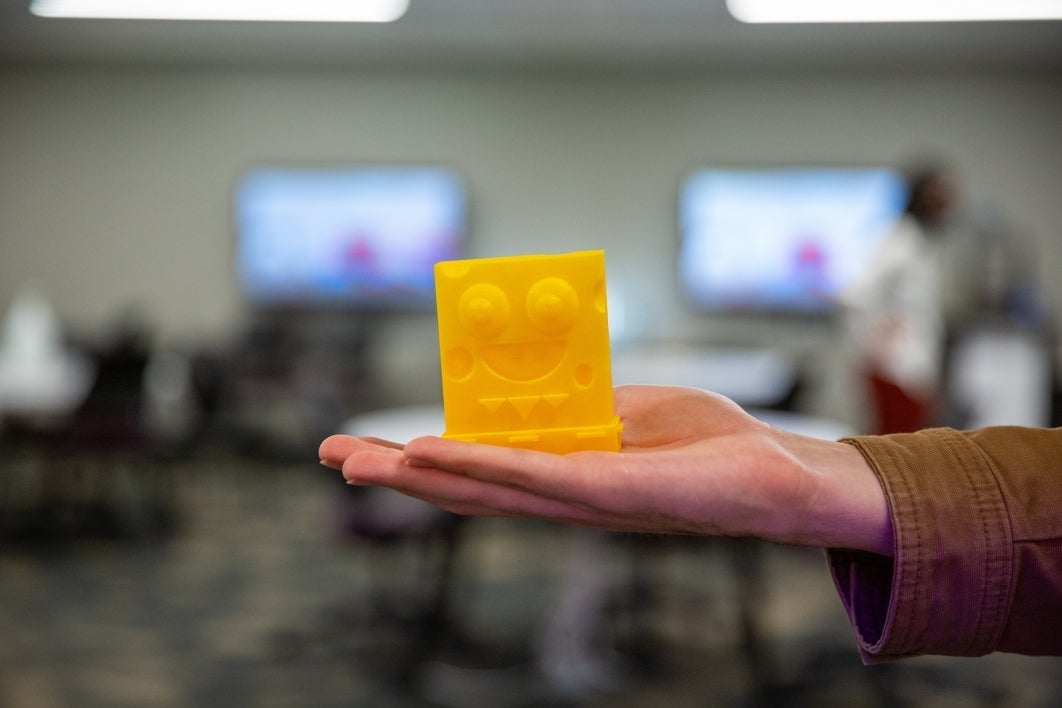Every summer, around 200 high school students from metro Phoenix spend time at Arizona State University in the Upward Bound program, where they learn what it’s like to be on a college campus — and what it takes to get there.
They stay in a dorm, hike up "A" Mountain, use the Sun Devil Fitness Center and, most importantly, learn about the technology and support that’s available at ASU.
Last week, a group of Upward Bound students learned how to use a computer program to design models. Then they printed them out on a 3D printer and were even able to experience their projects in a virtual reality gallery.
The staff from the Makerspace at Hayden Library guided the teens through every step.
“We want them to understand and know that if they come to ASU, the university has these technologies available for them,” said Victor Surovec, program coordinator for Hayden’s Makerspace.
“Just like you can check out book, you can check out virtual reality equipment. And they not only will have access to this, but they will have a support team at the library that will help them learn to use any of it.”
The Makerspace staff taught the students to use the Tinkercad program for design. Alexa Ramirez Garcia, who will be a sophomore this fall at Carl Hayden Community High School in Phoenix, created an incredibly detailed model of the room she stayed in at Tooker House.
“Our teacher introduced us to the program and I thought it would be cool to have an actual model of my dorm,” she said.
She spent hours designing the walls, floor and even dressers with working drawers.
“She only had to make a 10-piece model for the final and she’s made over 300 pieces,” said Surovec. Some of the complex pieces took eight hours to print.
Ramirez Garcia was then able to walk around “inside” her project with the Makerspace’s virtual reality headset.
Upward Bound is one of the federally funded TRIO programs and has been held at ASU since 1966. The goal is to encourage low-income students, who would be first-generation college-goers, to graduate from high school and learn what it takes to attend a university. Besides academic coursework like math, English and science, high schoolers in the four-week summer program also work on lab projects and take field trips. Upward Bound also offers “Saturday Academies,” where students learn about financial literacy and search for scholarships.
Erica Alcala, a teacher’s assistant for Upward Bound, said that the experience shows the teens the balance of freedom and responsibility they will have as college students.
“In the afternoons, they have workshops and then personal time, where they can do their own thing,” she said.
“Like college students, they have to be at certain places at certain times, and there isn’t someone monitoring that.”
Ramirez Garcia said the program has inspired her to consider college.
“Maybe I’ll go to college, but I’m not sure about ASU because I want to go abroad,” she said.
“I think I’d like to major in psychology or criminal justice, and computer science, too.”
Zcaniyah Morgan, who also attends Carl Hayden, loved the design class.
“I like to design stuff on the computer, but usually you have to follow directions. But here, we could use our creativity, which I thought was really fun,” she said.
And is she now interested in attending college?
“Way more than I ever thought,” she said.
“At first, I thought I didn’t want to go because it wasn’t something I was really interested in. When I get out of high school, I can go away and live life, right?
“But coming here, I’ve seen the things you can do. It’s great that I have all these opportunities now. It’s definitely made me think about it.”
Top photo: High school students Tamo Avelar (left) and Alexa Ramirez Garcia (right) prep their 3D models at the Hayden Library Makerspace on July 6 at the Tempe campus. Photo by Deanna Dent/Arizona State University
More Science and technology

ASU student researchers get early, hands-on experience in engineering research
Using computer science to aid endangered species reintroduction, enhance software engineering education and improve semiconductor material performance are just some of the ways Arizona State…

ASU professor honored with prestigious award for being a cybersecurity trailblazer
At first, he thought it was a drill.On Sept. 11, 2001, Gail-Joon Ahn sat in a conference room in Fort Meade, Maryland. The cybersecurity researcher was part of a group that had been invited…

Training stellar students to secure semiconductors
In the wetlands of King’s Bay, Georgia, the sail of a nuclear-powered Trident II Submarine laden with sophisticated computer equipment juts out of the marshy waters. In a medical center, a cardiac…
